Haad Farang (Haad Sai Yao), Koh Muk
Framed by jungle-draped limestone karsts, this small but striking bay has serene waters free of riptides, making it safe for families to splash around in the sun. As its nickname implies – farang is Thai for foreigner – you’ll find a large concentration of backpackers here. Still, with only a few sun-loungers and a couple of ramshackle food stops, it’s a far cry from the chaos of Chaweng beach on Koh Samui or Kamala on Phuket. Most of the bungalows, restaurants and Koh Muk’s near-nonexistent nocturnal scene are tucked out of sight in the adjacent woods.
The Guardian’s product and service reviews are independent and are in no way influenced by any advertiser or commercial initiative. We will earn a commission from the retailer if you buy something through an affiliate link. Learn more.
Rent a sea kayak (100 baht, around £2 an hour) and paddle around the corner to Tham Morakot (the Emerald Cave), a winding stalactite-lined cavern that opens up to a sheltered cove walled by dense foliage and frequented by bands of monkeys. It is awe-inspiring, but to fully appreciate it, be sure to pack a torch to avoid slamming into cavern walls and other kayaks. To avoid congestion, make the trip in the late afternoon, after the longtail boats (from £14) carting other travellers disperse.
Perched up on one of the limestone outcroppings, the aptly named Ko Yao Viewpoint Restaurant is the best place for sundowners. Skip the saccharine cocktails in favour of an icy Chang beer and bask in the last rays of the day.
In the evening, watch the sun melt into the waters of the Andaman, while perched up on one of the limestone outcroppings
Where to stay
Cheaper lodgings of comparable quality are set slightly back in the forest, but if you want beachfront access it’s worth shelling out a bit more for one of the basic bungalows at Koh Mook Charlie Beach Resort (bungalows from £32).
Getting there
Fly from Bangkok to Trang with AirAsia (from £30), then take a one-hour Tigerline ferry from Hat Yao Pier (£19). Alternatively, a five-hour ferry from Phuket at Rassada Pier (£41) goes directly to the island and will drop passengers at Haad Farang.
Ao Sabai, Koh Muk

Not far from the Emerald Cave is the island’s only uninhabited beach. Walled in by dramatic bluffs and a smattering of palm trees, Ao Sabai feels like a secret hideaway. It may be on the petite side and its sand is more amber in colour than postcard-perfect alabaster, but the seclusion more than makes up for it. Loll in the shallows or pack a picnic and chill out away from the crowds.
Getting there
Part of the reason Ao Sabai has retained its low profile is that it’s only accessible by longtail boat. Charter one of the dozens of wooden watercraft moored at Haad Farang for about £14.
Ao Kham, Koh Muk
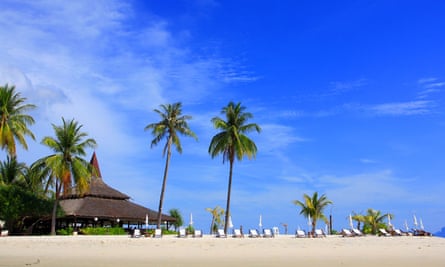
On the eastern side of the island, about 30 minutes walk or a speedy £1 tuk-tuk ride from Haad Farang, Ao Kham is both longer and more peaceful than its westward-facing counterpart. Luxury bungalows line the edge of the sand, but are set back far enough so as not to intrude on the panorama. In lieu of the clamour of hawkers, you’ll mostly find couples wading through the glass-clear water. Early in the morning, the speckled tracks of hermit and sandcrabs outnumber human footprints.
Early in the morning, the speckled tracks of hermit and sandcrabs outnumber human footprints
Sivalai Beach Resort has an extended menu of standard Thai and western dishes and is popular for evening meals. However, prices are high and the quality tends towards the mediocre. A bit further inland, Boon Chu (+66 82 268 3073) has a more local feel and affordable prices, though service is often slow. Meanwhile, Koh Mook De Tara Beach Resort has some of the more authentic dishes on the island. Though the waterfront bar’s claim of the “best margarita in the world” may sound dubious, plates such as massaman curry – with slow-braised, bone-in chicken in a rich sauce with crimson coconut oil – are excellent.
Where to stay
Sivalai Beach Resort (villas from £62 a night) is the only real option if you want to stay on this expansive strip of coastline. Though villa prices rise steeply during high season, the superior lodgings are worth it for those seeking tranquillity. Fortunately, as all of Thailand’s beaches are public property, so backpackers can spend the day here regardless of where they’re staying.
Getting there
As per entry for Haad Farang (Haad Sai Yao), see above.
Sunset Beach, Koh Kradan
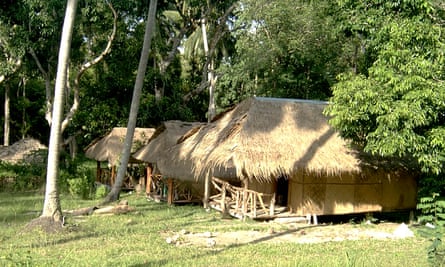
In recent years Koh Kradan has become the most popular of the Trang beaches. With sands the colour of Carrara marble and azure waters, it’s easy to see why. Cashew trees lend their distinctive fragrance to the air, and at low tide the ripples of the Andaman Sea recede to reveal wide sandbars so bathers can stroll far out into the sea. Even if this island no longer quite qualifies as untouched, the majority of the land is protected by Hat Chao Mai national park, keeping development to a minimum. Bucket bars, beach parties, and other tourist trappings are conspicuously absent, as are convenience stores and ATMs. Most visitors stay and sun on Kradan Beach, a skinny, 2km palm-fringed strip. For a more secluded spot, ride a longtail boat for roughly half a kilometre to this cove on the western coast. The beach’s popular nickname says it all: go at the end of the day to watch the sky flare into magenta, scarlet and saffron.
Where to stay
Accommodation on Koh Kradan runs from a high-end boutique resort to more rustic bungalows. If you don’t mind staying a few metres off the main beach, the quirky Paradise Lost (bungalows £14) offers plenty of personality and a terrific value.
Getting there
As per entry for Haad Farang (Haad Sai Yao), Koh Muk
Haad Man Sai, Koh Rok Nai & Koh Rok Nok
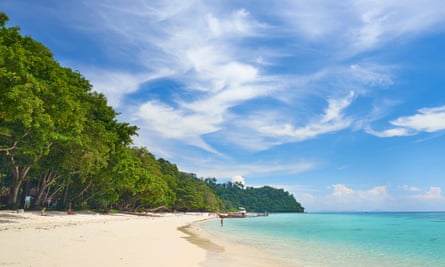
Ringed by a sprawling coral reef submerged just a few metres below the water’s surface, Koh Rok Nai and its twin Koh Rok Nok lure eager snorkellers from Koh Kradan, Koh Ngai, and Koh Muk. Technically, both are part of Krabi Province, but the spectacular scenery more than merits the more than two-hour longtail boat ride from the Trang islands. Mu Ko Lanta national park has shielded Koh Rok from greedy hoteliers, meaning monitor lizards still outnumber humans and an unruly tangle of jungle occupies most of the land. The majority of the boats moor at Haad Koh Rok, an expanse of crushed-coral sand that looks as if it has been plucked from the pages of a glossy magazine. If even a few fellow travellers are too many, walk to neighbouring Haad Man Sai, an equally lovely beach hidden from view by a few boulders. Note that a number of tours shut down during the rainy season between May and October.
Mu Ko Lanta national park has shielded Koh Rok from greedy hoteliers, meaning monitor lizards still outnumber humans
Where to stay
Since this is a protected national park, there aren’t any fancy resorts or even scruffy bungalows here. A few government-run tents are available for rent on Koh Rok Nok for £10. While the likelihood of scoring one is high, if you want the peace of mind that comes with a guaranteed reservation, it is worth considering a service such as Freedom Adventures, a Koh Lanta-based tour company run by a Thai-English couple that offers private, chartered overnight camping trips to the island (two days from £295 for two including all meals, snacks, national park fees, transportation, accommodation and guide).
Getting there
Longtail boats lead snorkelling tours from Koh Muk, Koh Kradan, and Koh Ngai for around £45-£68 a boat.
Haad Lang Kao, Koh Libong

The largest Trang island may lack the picturesque, powder sands of some of its more fashionable neighbours, but it more than makes up for it with untamed swathes of mangrove and a low-key vibe seldom found on more frequented shores. Aside from a few fishing villages that house Koh Libong’s 6,000-plus Thai-Muslim residents, there’s little here to intrude on the sublime stillness. Many visitors come here with hopes of spotting one of the dugongs that nibble on the abundant sea grasses just offshore, though sightings of the shy creatures are rare. Haad Lang Kao, a golden strip of coast covered with coarse sand and pebbles, may house all of the island’s resorts, but it still feels relatively remote. The resorts diligently remove driftwood and garbage that washes ashore, keeping these sands in better condition than some others.
Where to stay
It doesn’t get more mellow than Libong Relax Beach Resort (cottages with fan from £32, two-night minimum during peak times), directly by the sea. The basic cottages are clean and cosy, while the air-conditioned pavilions are swish for these parts. The resort owners are happy to organise trips to the local fishing villages or kayaking expeditions in search of those elusive dugongs.
Getting there
Fly from Bangkok to Phuket with AirAsia (from £40), then take a Tigerline ferry from Rassada Pier (5½ hours, £43). Alternatively, fly from Bangkok to Krabi with AirAsia (£30), arrange for a transfer to the Saladan Pier on Koh Lanta, and take a three-hour ferry (£24).
Ao Kuan Tong, Koh Ngai
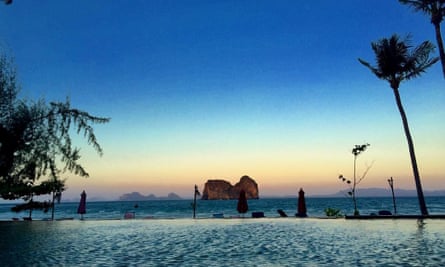
One of the busier islands in the area, Koh Ngai (also known as Koh Hai), officially belongs to Krabi Province, but is so easily accessible from Koh Muk and Koh Kradan that most travellers include it in their Trang island-hopping itinerary. A string of mid-range resorts and low-key restaurants and cafes dominate the main beach, giving it a bit more bustle than Koh Muk. Still, the warm, crystalline waters and white sands are very inviting.
Where to stay
Backpackers should check out the spacious green tents shaded by trees on the edge of the main beach, though note that these shut down for rainy season. Sea breezes ensure you won’t miss air-conditioning and you’ll enjoy a prime location next to some of the much pricier resorts. For a splurge, Thanya Beach Resort (doubles from £83) is one of the more stylish options.
Getting there
As per entry for Haad Farang (Haad Sai Yao), Koh Muk
Ban Koh Beach, Koh Sukorn

Also known as Koh Muu, or “pig island,” this speck in the Andaman Sea makes sleepy Koh Muk seem positively action-packed by comparison. Unlike Koh Kradan or Koh Ngai, where much of the local population is involved with the modest tourism trade, most of the roughly 3,000 Thai-Muslims that inhabit these shores work in fishing or farming. A bike ride along the island’s single 17km road passes undulating rice paddies and groves of rubber and coconut trees. Three out of four of the small resorts are clustered on Haad Lo Yai, the island’s main beach, leaving just a handful of bungalows over on somnolent Ban Koh Beach. Avoid the rainier months of the year between May and October.
A bike ride along the island’s single road passes undulating rice paddies, as well as groves of rubber and coconut trees
Where to stay
There’s nothing fancy about the bungalows at Sukorn Andaman Beach Resort (from £20) but they’re comfortable, quiet and offer easy access to Ban Koh Beach. There’s a decent if unremarkable on-site restaurant and even slightly spotty wifi.
Getting there
Fly from Bangkok to Trang with AirAsia (from £30), then catch the lone daily local ferry (£2). Alternatively, resorts on the island can arrange for private transfers.
Lao Liang Phi Beach, Koh Lao Liang
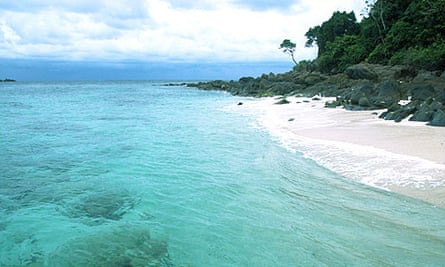
Ambitious climbers flock to the cliffs jutting up from the sandy shores of Koh Lao Liang Nong and Koh Lao Liang Phi. Though there are fewer routes, the vertiginous rock faces and sweeping views of sapphire seas easily equal anything on perpetually packed Koh Phi-Phi. Sea caves riddle the limestone formations and while the underwater reef cannot quite match Koh Rok’s, it still more than merits a snorkel. Of the two islands, the larger Koh Lao Liang Phi has the bigger beach and tends to be overlooked by touring longtail boats in favour of its sibling.
Where to stay
The bare-bones tents at Laoliang Island Resort (from £34pp) are the only accommodation option (and shuts down in the rainy months between May and December). There’s no internet access and the generator that provides electric lights switches off in the evening, but the seaside setting more than compensates for the lack of creature comforts.
Getting there
Most visitors combine their trip with a visit to either Koh Sukorn or Koh Libong, the nearest inhabited islands. Longtail transfers are available from either for around £45, though prices may vary.
Koh Phetra
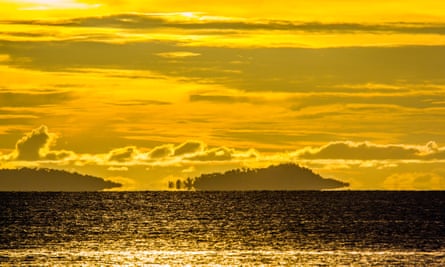
Virtually devoid of any of the major hallmarks of civilisation, this is the forgotten island of your dreams. Few roads and even fewer inhabitants mar this slip of land covered with towering limestone cliffs. Unlike the majority of the other 30 protected islands in Mu Ko Phetra national park, Koh Phetra boasts a sand beach lapped by gentle turquoise waves.
Where to stay
As there is no accommodation on Koh Phetra, the best bet is to bunk on Koh Libong and take a day trip to this haven.
Getting there
Stay at either Koh Sukorn or Koh Libong, the nearest inhabited islands. Longtail transfers are available from either from around £45, though prices may vary.
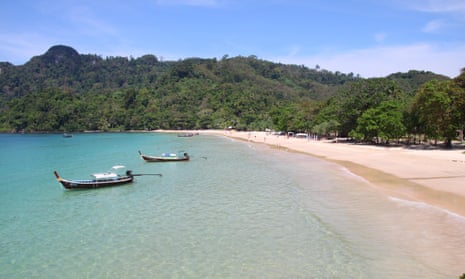



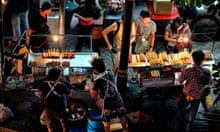
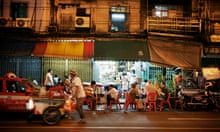
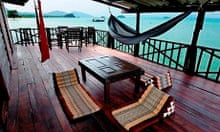

Comments (…)
Sign in or create your Guardian account to join the discussion